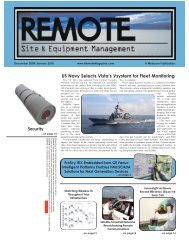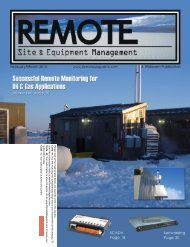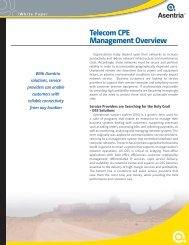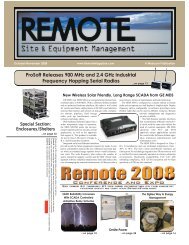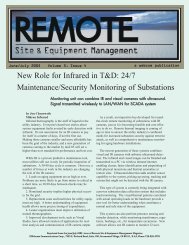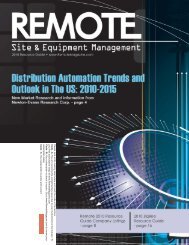Electricity for Free? The Dirty Underbelly of SCADA and Smart Meters
Electricity for Free? The Dirty Underbelly of SCADA and Smart Meters
Electricity for Free? The Dirty Underbelly of SCADA and Smart Meters
You also want an ePaper? Increase the reach of your titles
YUMPU automatically turns print PDFs into web optimized ePapers that Google loves.
<strong>SCADA</strong> Vulnerability StatisticsHaving a st<strong>and</strong>ard model <strong>for</strong> the various security levels in a <strong>SCADA</strong>, DCS, EMS, DMS, or AMRsystem is an important first step in classifying <strong>SCADA</strong> vulnerabilities. Once the model becamepart <strong>of</strong> the ISA S99 st<strong>and</strong>ard, we began to log <strong>SCADA</strong> vulnerabilities as to where in this modelthey were discovered.After conducting over 100 assessments <strong>of</strong> <strong>SCADA</strong> <strong>and</strong> various types <strong>of</strong> control systems, ourteam eventually logged over 38,000 security findings <strong>and</strong> vulnerabilities from theseassessments. In 2009, we were under contract from DHS to comb through these vulnerabilities<strong>and</strong> determine if trends in the data could help expose typical areas <strong>of</strong> vulnerability within<strong>SCADA</strong> systems, <strong>and</strong> the type <strong>of</strong> vulnerabilities most commonly found.We Don’t Need No Stinking <strong>SCADA</strong> 0-DaysWhen we set out to start capturing statistics on our vulnerability assessments, we wanted toknow if these vulnerabilities that we are finding were already out in the public domain, <strong>and</strong> whenthese vulnerabilities were disclosed. We started entering the vulnerability disclosure date to thedatabase, just to see if any interesting trends would develop. Some <strong>of</strong> the vulnerabilities that wefound were not previously disclosed, <strong>and</strong> in some cases, the disclosure date was unknown, sowe threw those records out. In a sample set <strong>of</strong> over 38,000 vulnerability records, we found thatthe average number <strong>of</strong> days between when the vulnerability was disclosed publically <strong>and</strong> whenour team discovered the vulnerability was 331 days.In some <strong>of</strong> the worst cases, we found vulnerabilities that had been disclosed over 1100 daysbe<strong>for</strong>e we found it, meaning that these mission-critical <strong>SCADA</strong> systems were vulnerable toa known exploit <strong>for</strong> over 3 years be<strong>for</strong>e we found the problem. It is well known that controlsystems are more difficult to patch than Enterprise IT systems, <strong>and</strong> the statistics in the dataproves that we still have a patch management issue with critical infrastructure, especially whenthe patch has been available <strong>for</strong> on average <strong>of</strong> one year or more, <strong>and</strong> these systems are stillpopping up with old vulnerabilities. Which raises a serious issue, how many more criticalinfrastructure systems are working today like ticking time bombs with known vulnerabilities <strong>and</strong>exploits out in the wild that can take them down?pg [ 13 ]



